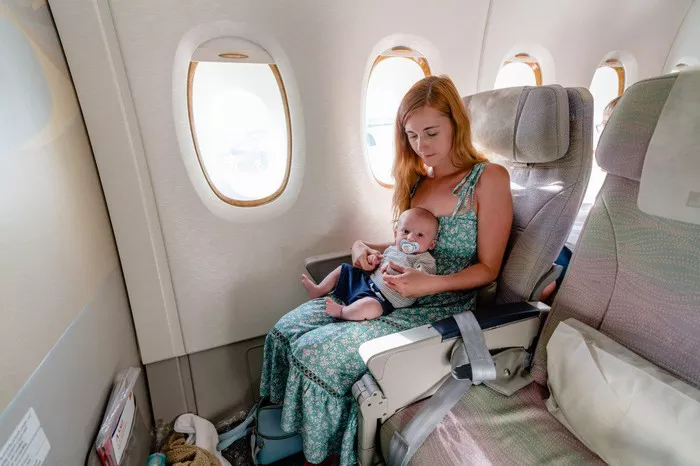When Cait Williams, a Brooklyn mom, planned her trip to Los Angeles in March for work, she brought along her husband and their 15-month-old daughter, Zuri. Williams, a 36-year-old philanthropy officer, opted for a third seat, allowing Zuri some space to move around. Despite the luxury of extra room, recent incidents of turbulence made Williams reconsider flying without a car seat until Zuri turns 2.
As summer travel approaches, parents flying with young children are reevaluating safety measures. While the Federal Aviation Administration (FAA) recommends children under 2 to have their own plane seat with an FAA-certified child-restraint system, many still opt to hold them on their laps due to cost concerns.
Although turbulence-related injuries are rare, a 2019 study by the National Institutes of Health highlighted the risks of unrestrained lap children during flights, particularly during meal service or turbulence. Daniel Kwasi Adjekum, an aviation professor, warned that these children could become projectiles during severe turbulence, endangering themselves and others.
Despite safety concerns, the FAA permits children under 2 to fly on a parent’s lap to encourage air travel over less safe modes of transportation like driving. This approach has faced criticism, with some advocating for each passenger, including infants, to occupy a separate seat with a restraint system.
While turbulence frequency hasn’t increased, societal changes since the FAA rule’s inception in 1992 raise questions about its relevance today. Some flight attendants propose banning the “lap child” exception to enhance safety standards.
However, for parents like Summer Zalesky, the idea of mandating separate seats for infants seems excessive. Zalesky, who travels with her young children, balances safety concerns with practicality, opting for a car seat on longer flights but holding her infant on her lap during shorter trips.
Leah Pascarella, a Manhattan-based consultant, echoes this sentiment, prioritizing safety based on flight duration while acknowledging the importance of not succumbing to unnecessary anxiety. For parents like her, the decision to secure a child in a separate seat hinges on balancing safety with practicality and mental well-being.
Yet, the question remains: Should airlines subsidize tickets for children if securing a separate seat is deemed the safest option? Many families, like Williams’, face financial constraints that make purchasing an extra ticket challenging. As the debate continues, parents grapple with finding the right balance between safety and affordability when flying with their little ones.


